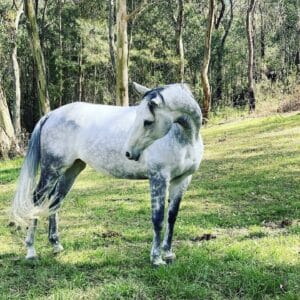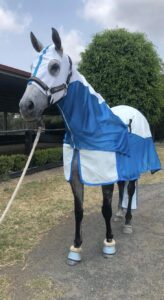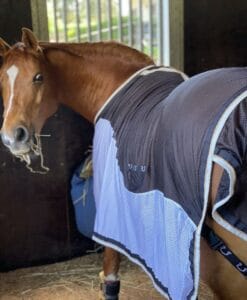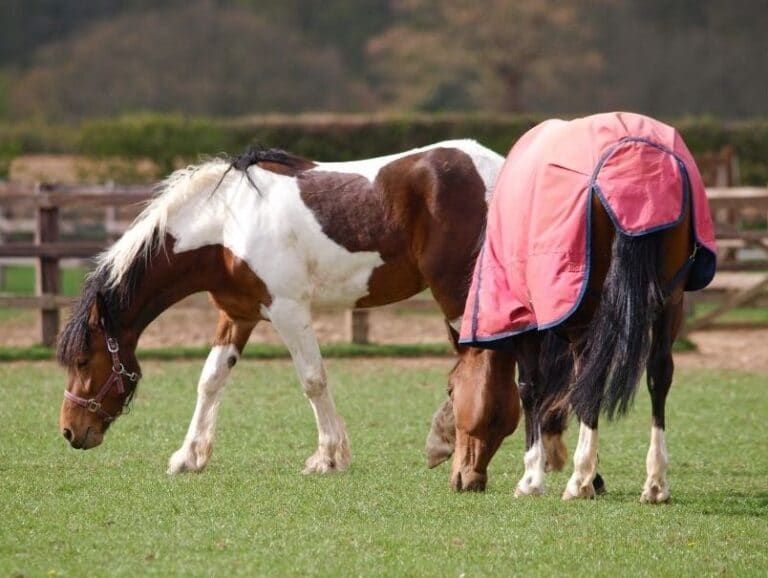Rugging in summer is, more often than not, a personal choice. In this article we will explain the various angles that may influence your decision to rug your horse. It may be that your horse needs rugging for a range of reasons such as protection from insects, managing itch, or preventing a coat from bleaching. Whilst it is one thing to run out and throw a rain sheet over your horse during a storm, it is another to have a complete rugging regime for the hottest months of the year.
So, how do you know what rug to choose for your horse?
The perfect rug will often depend on your horse’s health and lifestyle. Some are just built tougher than others, are non-competitive and are happy to live their best life out in the paddock, not phased by summer bugs and the elements. Other horses are more sensitive to the tough conditions of the Australian summer, and require some form of rugging. With this in mind, there is no ‘one size fits all’ solution!
Wading through the various types of rugs available can be a daunting task. It seems like a never-ending list of things to consider when choosing what is best for your horse. There are so many options available – cotton, ripstop, flag, mesh, hybrid or no rug at all. However, the main thing to remember when deciding between options, is to ensure that your choice meets your horse’s individual needs. In this article, we will explore some of the key points to consider when choosing your summer rugging plan.
Temperature
As warm-blooded animals, horses have a thermoneutral zone which, put simply, means they feel cold if the air temperature drops below 0°C or hot if it rises above 25°C. While it is easy for a horse to regulate its body temperature between 0°C and 25°C, this is Australia, and summer is HOT. If your horse struggles with the heat, yet needs a rug for protection, try using a lighter material with mesh that allows air flow to help keep them cool.
Health
Like us, horses need vitamin D from the sun to achieve optimum health. Vitamin D regulates calcium and phosphorus, keeping their bones strong. Rugging can diminish a horse’s ability to absorb vitamin D through their skin which can lead to deficiencies. A thick rug such as a ripstop may stop your horses coat from bleaching, but can also negatively impact its ability to absorb vitamin D. Ensure your horse’s coat has some time in the sun to reap the benefits of this essential vitamin. If rugging is non-negotiable and your horse’s coat must be covered at all times, try introducing a supplement to their diet to ensure they get the vitamin D that they need.

Sweat / Breathability
Excessive sweating under rugs can cause a range of issues such as rubbing or itching. Rubbing can lead to a multitude of issues such as skin and coat damage, sores, and infections. If your horse is a big sweater, or is at risk of getting sweaty under their rugs, it may be best to let them without a rug to avoid irritation. If your horse needs a rug, it may be best to use a correctly fitted natural fibre or cotton rug that is breathable, in order to prevent sweat and rubbing.
Insects
Rugging for Queensland itch and other insect-related ailments can be just as tricky. A mesh rug may work well for a tougher horse but if you have a sensitive horse, a cotton ripstop combo or rug and hood may be the answer.

Coat
If you are rugging to save a coat from bleaching, use a cotton combo or rug and hood. No one wants a split-toned coat with a neck three shades lighter than the body!
Rugging during an Australian summer can be tricky, and if not done correctly can be considered a welfare issue for your horse. Rugging should only be done if your horse needs it and not because the horse next door has one. If you are really stuck, confining the horse to shade during the day and allowing them to graze at night could be the answer to the tough conditions presented in summer.

Just remember, horses are as unique as we are – so in the end, rugging choices will always be personal to each horse. If you can’t decide on what to rug your horse in, or your horse does not really need rugging, then letting them be naked is also absolutely fine!



